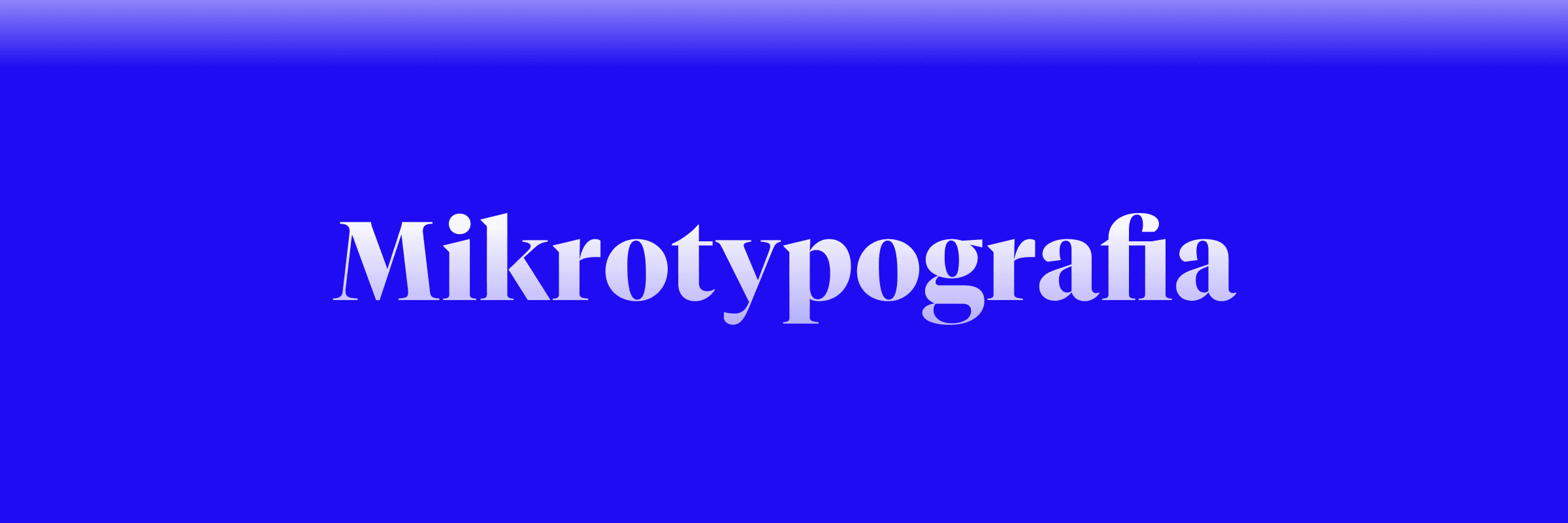
Practical guide to visual accessibility

Microtypography is the art of improving the appearance and readability of text with a minimal amount of visual distraction. Microtypography does not only concern the characters themselves, but also words or lines. Improvements in micro-typography should ideally not even be noticeable. We bring you a few rules that will help you improve readability using micro-typography.


We bring you the third article about typography. In the first article, you've read about basic concepts in typography, basic divisions or anatomy of the font. The second article focused primarily on readability, legibility and factors that affect these experiences.
In this article, you will read about microtypography, its importance and frequent mistakes that we encounter almost every day.
One of the most frequently confused characters are the dash and the hyphen.
The dash is separated from the text by spaces on both sides and is longer than the hyphen. It is used to introduce individual points, to indicate a span (5th - 7th century), instead of an omitted linking verb (youth - foolishness), to separate direct speech...
The hyphen is shorter and written essentially without spaces. A hyphen joins compound expressions or marks the division of words at the end of a line.
If we are designing a product for the Slovak market, we should pay attention to the correct choice of font. Many fonts do not have bottom quotation marks, or they have the wrong shape. A little help, there is a rule 9966 - the lower quotes are in the shape of the number 9 (the top is wider), the upper ones are in the shape of the number 6 (the bottom is wider).
When using quotes, we should also think about the country for which we are creating the product. If " " " somehow became an international symbol and is understood by almost everyone, when designing products for state institutions, education or newspapers, we should follow the rules of the written language of the given country. See the correct usage and forms of quotation marks in other countries.
There is disagreement in Slovak language on this issue. In each case, characters are separated by a space according to the rules of Slovak spelling. However, older Slovak literature as well as the book Typographic minimum by the author Roman Šípek state writing values without a space if it appears as an adjective. It probably stems from the word notation that is written together - e.g. five percent.
When expressing the date numerically, the individual components of the date are separated by a space. If the year is entered, the full version should be used. In some cases, such as a narrow font, internal documents such as a protocol or minutes, a shortened version without spaces can be used.
Also, the number 0 should not be placed before a single-digit number. Exceptions are again legal documents, register, protocols...
A thing that spreads like a pandemic. More and more we notice that many people put before the "?" gap. Space before "?" doesn't belong. Never! Never! Never! :)
Slovak typography prohibits leaving one-letter prepositions and conjunctions at the ends of lines. In the digital world, a frequent mistake, often also due to the work of the designer who does not read the texts, only puts them in the right place. With "body" texts, this problem probably has no solution due to screen sizes and responsiveness. But the headings are often hard coded, there we can influence it. Designers, let's read.
A widow is the last line of the previous paragraph at the beginning of a new column or page.
A widow is the opposite of an orphan, it arises if we forget the first line of a new paragraph at the end of a column or page.
Highlighting words in text can be risky. The underlining extends to the bottom lines, the italics are lost in the text, the semi-bold and full-bold fonts can merge. Other problems arise from the combination of marking and punctuation. The Slovak rules are clear about this. Aesthetics wins over grammar, and thus punctuation is tied to the highlighted word. For example: italicized words in parentheses are placed in italicized parentheses.
Fun fact of the day: Grammar wins over aesthetics in the Czech Republic :)
Have you ever thought of writing time other than with a colon? Also with this notation: we meet almost everywhere, it is not the right solution. The colon began to be used with the advent of digital watches.
According to the rules of written Slovak, hours and minutes should be separated by a period, minutes from seconds are separated by a colon, and seconds from tenths of a second by a decimal point. However, we also have an exception, and that is a sporting event where the hours and minutes are also separated by a colon.
Our series of articles on typography is coming to an end for now, but if there's a topic you missed in the articles, feel free to drop us a message and we'll be happy to take a look at it.






